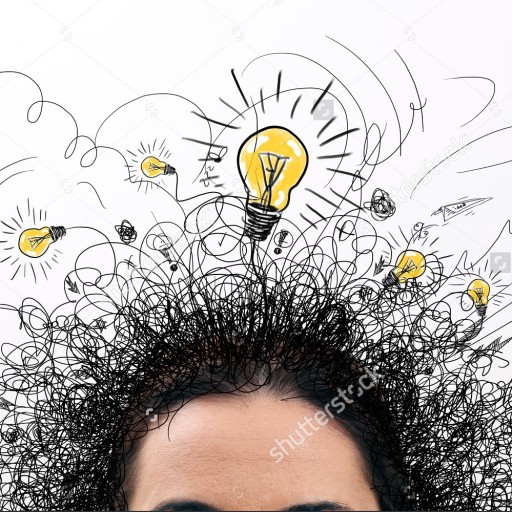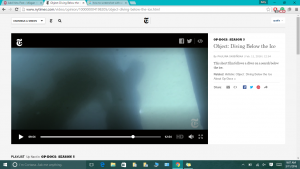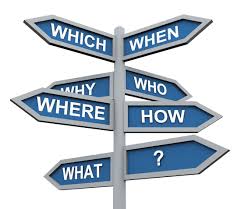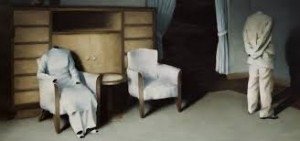See it Through My Point of View
Composing through images can be a bit more difficult than words simply because it is easier to type a word then find a picture that says exactly what you want it to. Although, when you do find a picture that depicts exactly what you are trying to say I think that pictures can speak louder than words. For myself, using images wasn’t hard to portray my argument because I enjoy design and layouts and figuring out what works best to show the audience what you want to illustrate to them. Personally, I think writing the paper with words was more difficult than with pictures. A weakness I have is organizing my thoughts with words in a way that it makes sense. However, with the images organization and the design, I would say were my stronger points. My favorite image would be the illustration of a child with A.D.H.D stamped on his head. This image physically shows children being labeled ADHD which depicts my whole paper topic. In contrast, my least favorite picture would be the children at the computers with headphones on. The reason for this is because I had trouble depicting what the diagnosis looking like without getting the audience confused by it looking like an adult is helping the child.
When it comes to designing visuals I have had a good bit of practice because I was the design editor of my high school yearbook for two years. For me, all parts of the design work were enjoyable for me since it let me think creatively and show a paper without having to type out the actual words. For this project, I just about knew exactly what I wanted to do and how I wanted to portray my essay with images. Although, One thing I did not anticipate was not continuing the design of the black dotted line through the whole powerpoint but eventually I didn’t need to use it for the message to the audience. The black line also was my favorite design choice because it subtly gave a message to the audience as well as the pictures. On the other hand, the least favorite design element I used would be the background color. I feel like I could have changed the color some more to set the tone of the slides but I wasn’t sure what colors to do and how to do them.
The advantage of already having the written paper was that I already had the arguments, the layout, and organization from the paragraphs to where I just had to find pictures that matched each one. I prefer the Image essay over the written one. This is because I found it easier to say my opinions through the depiction of pictures and the layout of pictures came easier to me than the layout of the words. I think both print and images are important to this argument ,however, Images I believe tell a better and more powerful story. When a viewer is looking at pictures they can be connected at a higher level than with words. Sometimes words can be misread or misunderstood to where the intended message can be lost.
Strengths and Struggles
I really like the pictures I have found so far. The pictures that I have included in my project portray exactly what I want to say. I have yet to have a hard time getting my message across with just images and not being able to use words in this project. Another thing I like is what I am doing with the slide transition. I have the layout pictured fully in my head and I just have to take the time to add the effects with the powerpoint. Although, one of the struggles that I am coming across is a design element that I have decided to include. I am not sure whether or not the audience will notice and understand what message I am trying to send with the design on the page. I wanted it subtle but effective and I am trying to find a way to make that evident in my project.
3…2…1…Breakdown
One thing I realized during this project is that in every forum there was a writer that discussed the topic in a racial view. Another interesting thing that stood out to me was how high the statistical numbers actually are for children being diagnosed with A.D.H.D. Also, the writing strategies we went over in class gave me a new way of how to approach an argumentative paper.
After completing this writing assignment I still have two questions . One was why does the writer that takes a racial discrimination stance on the topic think that teachers would purposely turn their back on a child solely because they are not white. In addition, another question that I had was whether or not I should have used one of the writers that shared an a like view with myself to support my paper even further.
I stand by my opinion that people in today’s society have creative a reliance on A.D.H.D medication to almost put a band aid on the problem of this disorder rather than working with the children who truly suffer.
What Timed Writing did for Me
Before our timed writing assignment, I was all over the place and didn’t quite know where to start my writing. However, once under the pressure of time, I felt that I was able to focus in and give a clearer outlook of my thought within my writing. Something that I need to spend more time on with the writing process is the draft. I typically write my draft the night before it is due which I’ve realized isn’t the best way to go about it. This is because the draft is you basis and structure for your whole writing and without having a solid draft to work with. However, the part of the writing process that works best for me is my outlines. When I have created a well drawn out the outline I am able to organize my thoughts, arguments, and topics that I want to include in my writing. One thing I want to improve would be the amount of time I take to edit papers for the final draft. Sometimes I get in the habit of not wanting to read over my writing because I am the one who wrote it and I already know what it says. never the less, rereading your paper is crucial to having a good paper without missing words or too many words.
Biggest Problem with Argumentative Writing
My biggest struggle within this paper will be structuring and finding reliable sources that back up my thesis. I have ideas of how to approach the argument but I will need to find sources that will specifically back what I am trying to say. So far I have been able to look into the advanced search in the library sources. I have found a copious amount of articles that discuss my specific argument points, however not all of them are reliable and I am going to have to really pay attention to what is and isn’t a good source. Sometimes it is really easy to just google the topic of choice but I am going to try to stay within the library search engine, that way I know that it will be a good source and I will meet the requirements of using, at least, three sources from the library search engines.
Thoughts on the Argument Paper
I feel like I will be able to incorporate other outside sources and correctly put them into my writing. I am worried about finding good relevant counter-arguments that will help back up my personal argument. My idea I think is close to another writer in the forum or at least, has some alike ideas and I am curious to see if I can compare and contrast to make my argument stronger. One other thing that I am unsure about is that which arguments to use that are counter to mine because the other writers do have necessarily opposing ideas but more of different approaches. I am also worried about how I will set up my paper and where to place which paragraph.
Break Down: Visual Rhetoric
During my paper, I wrote about the absence of identity and how the filmmaker never actually states what the diver is doing. This element of not being straight forward about the mission of the diver keeps the audience guessing and grabs their attention to figuring out what this video is all about. However, during this section of the film, is the first and only time that the viewers get a glimpse into the heart heavy task that the diver is carrying out. Once the audience sees this scene they are being pulled by the element of pathos, in a way that everyone can connect to in some way. The reason for this is because during this part of the film the audience sees the diver retrieving another fellow diver and bring them up from the bottom of the ice. After this scene, the audience can start connecting what the rest of the Op-Doc has been showing and the directors statement. When the viewers see that they’re retrieving a deceased diver the information in her director’s statement about “the grave” and “the object” starts the become clear. Also, there is some clarity for the first scene shown of the ice when there were two objects below the ice and the audience is trying to figure out what these objects were as if the director was foreshadowing what was to come.
The image above represents the activity we did in class that made us break down the Op-Doc in a way that we had to answer three questions. The questions were How,Why, and So what. This meant how did the director carry out their message, Why did they use that technique to do so, and so what did that do for the readers and the film. This activity helped me figure out a way of how to approach the assignment. Before we looked at how to break down the video with these three questions and take it deeper I had no clue of the direction I wanted to take this project. Once I was able to answer the questions about the whole video I then could answer these three questions about more specific parts of the film such as the visuals, sounds, and in my case the absence of certain elements. With having the three questions in mind I also could create my main idea and they became the bases of development for my whole paper. Since I completed this task I was able to see what I was going to focus on throughout my analyze.
I chose this image of people with no faces and an empty chair becuase this shows the absence of idenity and language. My thesis for this paper discussed the absence of idenity and the use of visuals and sounds that heightened the intensity of not knowing what is it that the director is filming. The people in this picture have no faces/heads which means they have no idenity and the empty chair symbolizes the absence that I discussed within my thesis. The director also never used dialog in the film, which become unnesscary by the visuals and angles she used within the film. The picture above displays this with not having a face.
Confessions of a Writer
In grammar and writing, there is always something that someone struggles with. Personally, my most common mistake is not rereading my paper. I always end up convincing myself that since I was the one writing I already know what is on the paper so why reread it. Confession: I typically have someone else do if for me because I can’t get myself to do it. Although, I know my papers need rereading and editing it’s always hard to make myself sit down and do it.
NAMLE “Rich Reading” Questions
For the op-doc that I am using”messages and meaning” will be the questions that I focus on the most. This is because my video I have chosen is solely video and no sound it will be important for me to look at the content and techniques that the director uses. Object; diving below the ice has a great visual aspect that I can really pull from to write my analyze. My plan is to pick apart each technique and visual tool she used and how it impacts the way that the audience interrupts and views the film. Do to the video not having words I plan on using the footage for the content. Also, do to the video being so recent of in being published and made no real context or effects have been made so I plan on trying to find a new twist on that section.
Working Through the Literacy Guide
For writing our literacy guides we were given a set of requirements that the guide had to contain. One of the requirements that I enjoyed working with was the writing process and style. As a journalism major I enjoy writing when I am able to add my voice and personality into the writing. In my opinion, this makes the writer and audience feel more connected to the writing assignment and each other. Another one of my favorite parts of writing is the creative aspect. I had fun creating a unique theme and different section titles that held my personality and voice. However, not all parts of this guide were easy. A challenging part of this guide for me was which sections of The New York Times should I use, how should I order them, and how much do I write on each section. This was a struggle for me given that the paper has an abundance of opinion articles of all different forms. For example, I had to think about whether or not the comments section needed its own paragraph or if they should just be lumped in with another topic or if the Op-eds are more resourceful than the editorial boards. I had to reorder my paper, at least, five times trying to create a layout that reflected the order of usefulness and importance to forming your own opinion. The length was another struggle I had when writing on each of the sections. I had to figure out how much it took to get my voice across with using all the required research and examples. I also needed to consider which sections needed to be further explained than others. Something that helped me when writing this guide was the assignments we did in class in the weeks that we were exploring The New York Times. The assignments taught me how to navigate and seek articles of all types throughout the paper. When we looked at the most popular page also helped me a great deal when I was writing my literacy guide. One of the requirements was including the influence and interaction of social media with the articles. The most popular page gave me opinion articles that were ranked most shared, viewed, and searched. With this resource, I could show supportive evidence that the opinion sources that I used were also used by copious amounts of other people as well. Lastly, during this project I learned a lot of useful things about writing. To me, one of the most important things this project has taught me was how to identify a writing type, style, and what details supported that finding. Before the literacy guide, I didn’t know how to clearly identify a writing style and describe it. However, now I am able to explain to another person with examples of why I can tell what writing style articles are. I also learned how a authors personality seeps through their writing and how much of an impact hat can make. I find writing when the author incorporates their opinions and voice more enjoyable than strictly fact based writing. Frank Bruni an op-ed columnist was a great example of this that I found during my research for opinion sections. His writing style is full of passion and reason while at the same time he tells the audience about himself as well.




 Welcome to My Thoughts
Welcome to My Thoughts